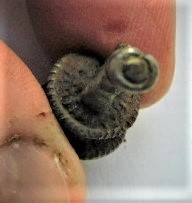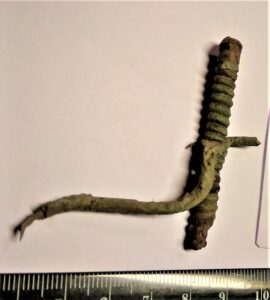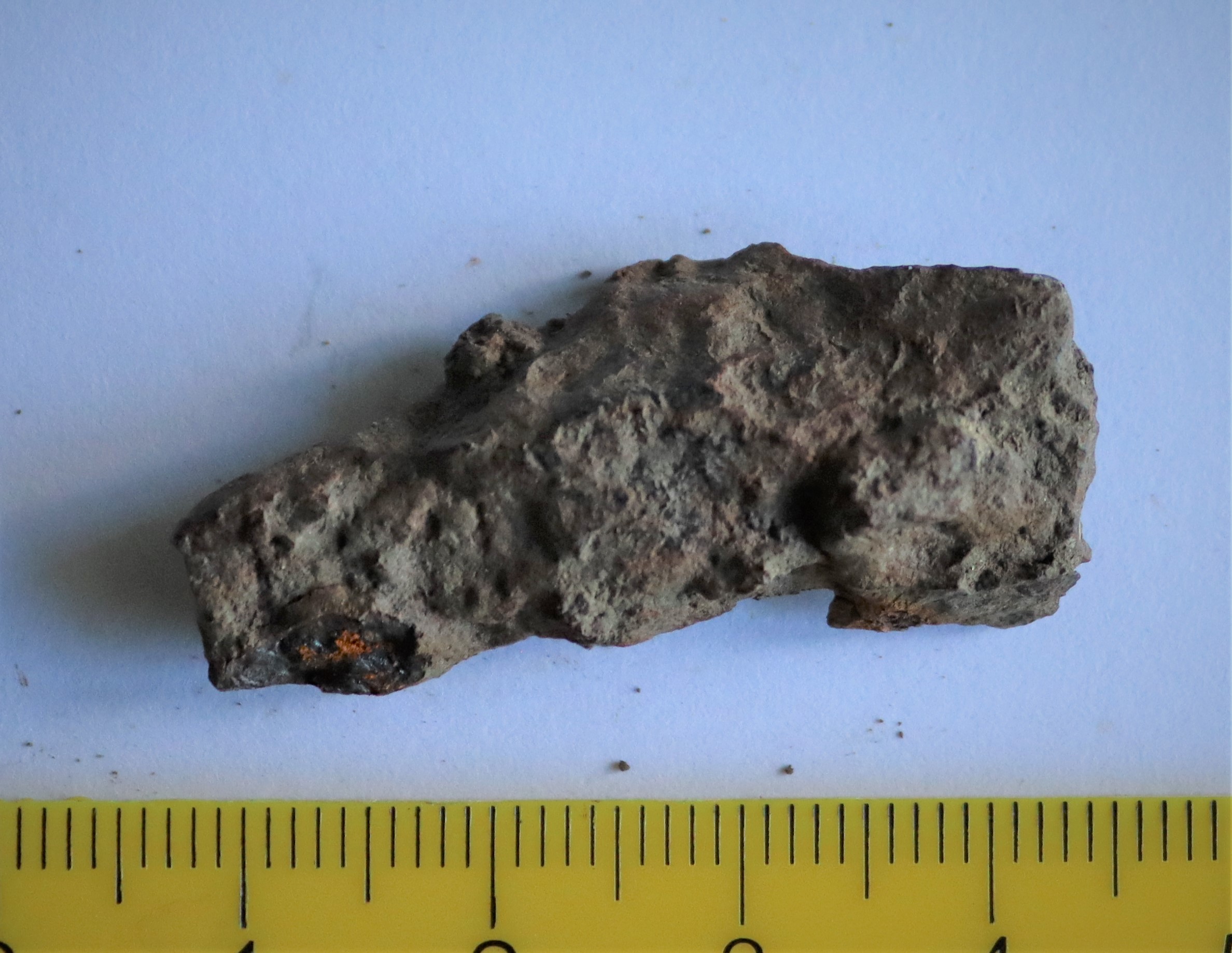Database
Our database is free to use for all history and archaeology enthusiasts. If you use our database, please do not forget to cite correctly:
Mägi, Marika; Palm, Piia Sandra. Archaeological Artefacts of Saaremaa. Foundation Osiliana / Tallinn University. Accessed: date.
The Osiliana Archaeological Database presents artefacts from Saaremaa and the surrounding small islands.
The database contains mainly Iron Age and Medieval finds that can be classified.
Undated metal or other pieces were generally excluded from the database.
Ceramics are represented by isolated examples.
The database is a work in progress and is constantly being updated.
Ure
Artefact fragment, iron. Fragment of the shaft (of a spearhead?), narrowing towards one end. The diameter is 1.8-2 cm, the length is 3.5 cm.



Artefact fragment, iron. Fragment of the shaft (of a spearhead?), narrowing towards one end. The diameter is 1.8-2 cm, the length is 3.5 cm.
Ure
Fragment of crossbow brooch, silver + bronze + iron. The upper part of the arch, pierced by a spiral shaft; some iron is preserved in the hole. The knob is wrapped in silver wire. On the top of the neck, are three silver-wire hoop sets, and between them an embossed band imitating the previous ones. The neck has a square cross-section.





First poto: Jaana Ratas.
Fragment of crossbow brooch, silver + bronze + iron. The upper part of the arch, pierced by a spiral shaft; some iron is preserved in the hole. The knob is wrapped in silver wire. On the top of the neck, are three silver-wire hoop sets, and between them an embossed band imitating the previous ones. The neck has a square cross-section. Probably a local product, from the end of the 3rd-4th century (Rohtla 2005, 123 jj).
Literature:
Rohtla, M.-L. 2005. Crossbow fibula as a reflection of social status and relations. – Culture and Material Culture. – Interarchaeologia, 1. Ed. by V. Lang. Tartu – Riga – Vilnius, 121–145.

Ure
Artefact fragment, bronze. Curved, with circular cross-section. Perhaps fragment of a ring?

Ure
Artefact fragment, bronze. Circular cross-section. Perhaps part of a pin shaft.

Ure
Knife fragment, iron, the width of the back is around 3 mm. Tip of the tang.
Ure
Crossbow brooch fragment, silver and bronze. The upper part of the arc of the brooch. There used to be a silver ring garniture on the neck. Probably there have been two silver ring garnitures with a triple bronze(?) set between them, lower than the previous one. The fractured cross-section of the neck is square, head is flat.





Crossbow brooch fragment, silver and bronze. The upper part of the arc of the brooch. There used to be a silver ring garniture on the neck. Probably there have been two silver ring garnitures with a triple bronze(?) set between them, lower than the previous one. The fractured cross-section of the neck is square, head is flat. The brooch may belong to the 3rd century, but more likely to the 4th-5th century (Rohtla 2005, 126-127).
Literature:
Rohtla, M.-L. 2005. Crossbow fibula as a reflection of social status and relations. – Culture and Material Culture. – Interarchaeologia, 1. Ed. by V. Lang. Tartu – Riga – Vilnius, 121–145.
Ure
Crossbow brooch fragment, bronze and iron. The top part of the arc and one branch of the spiral axis. Similar to brooch SM 10862:16. It also had a similar head knob to that, but it is broken.


Crossbow brooch fragment, bronze and iron. The top part of the arc and one branch of the spiral axis. Similar to brooch SM 10862:16. It also had a similar head knob to that, but it is broken. Probably from the 3rd century AD (Rohtla 2005, 123 ff).
Literature:
Rohtla, M.-L. 2005. Crossbow fibula as a reflection of social status and relations. – Culture and Material Culture. – Interarchaeologia, 1. Ed. by V. Lang. Tartu – Riga – Vilnius, 121–145.

Ure
Knife fragment, iron, the width of the back is around 3 mm. Tip of the tang.
Ure
Crossbow brooch fragment, bronze and iron. A spiral axis that is made out of bronze wire and wrapped around the iron stick. The arc has an oval cross-section and it has the markings of ring decorations. The place where the spiral axis is attached to the arc is shaped as a flat cross-section and ends with an approx. 1 cm long head knob with a circular cross-section.


Crossbow brooch fragment, bronze and iron. A spiral axis that is made out of bronze wire and wrapped around the iron stick. The arc has an oval cross-section and it has the markings of ring decorations. The place where the spiral axis is attached to the arc is shaped as a flat cross-section and ends with an approx. 1 cm long head knob with a circular cross-section. This is an artefact type widespread in Estonia during the 3rd century. (Rohtla 2005, 123 jj).
Literature:
Rohtla, M.-L. 2005. Crossbow fibula as a reflection of social status and relations. – Culture and Material Culture. – Interarchaeologia, 1. Ed. by V. Lang. Tartu – Riga – Vilnius, 121–145.
The negative value refers to time Before Christ.







